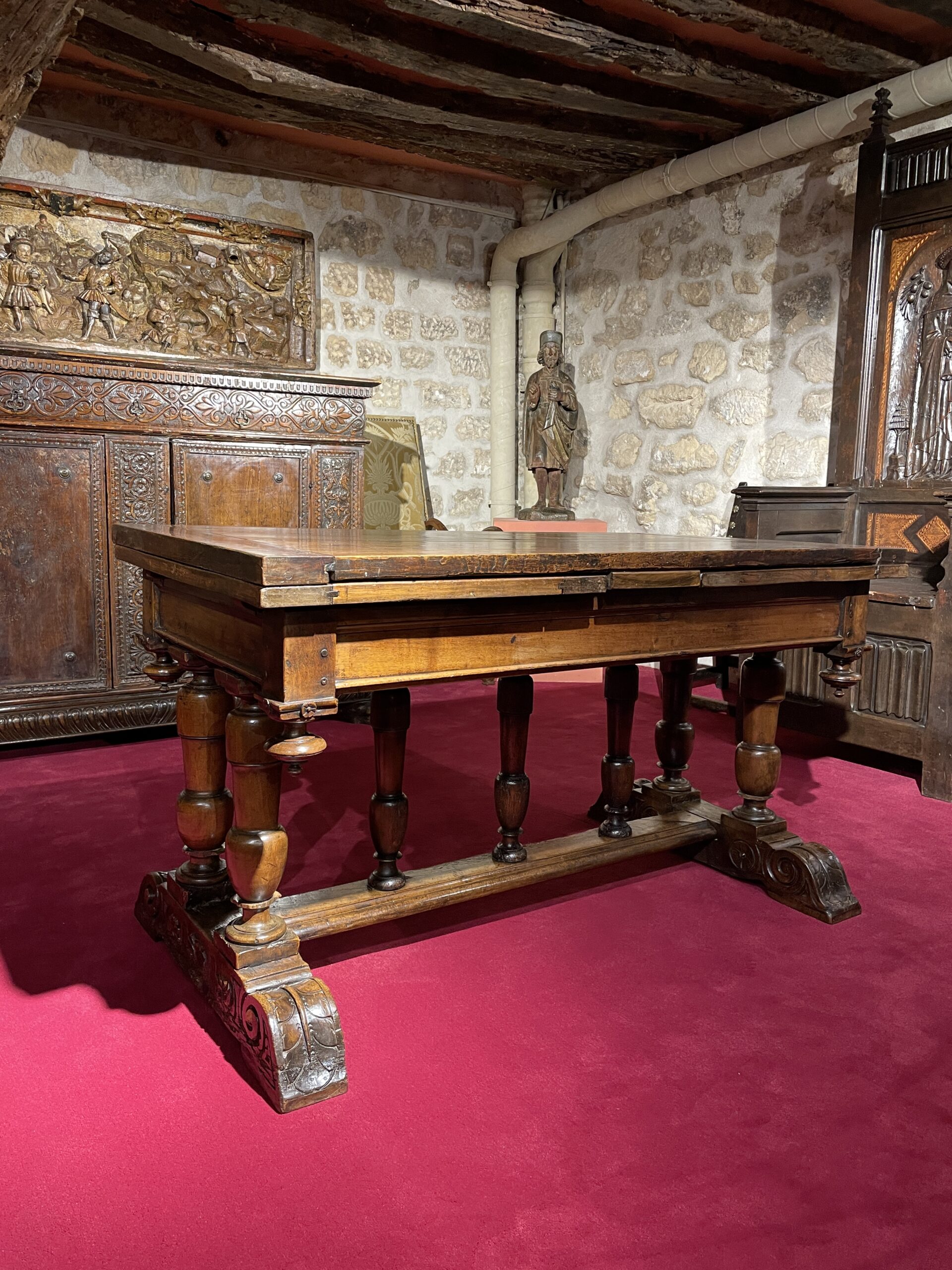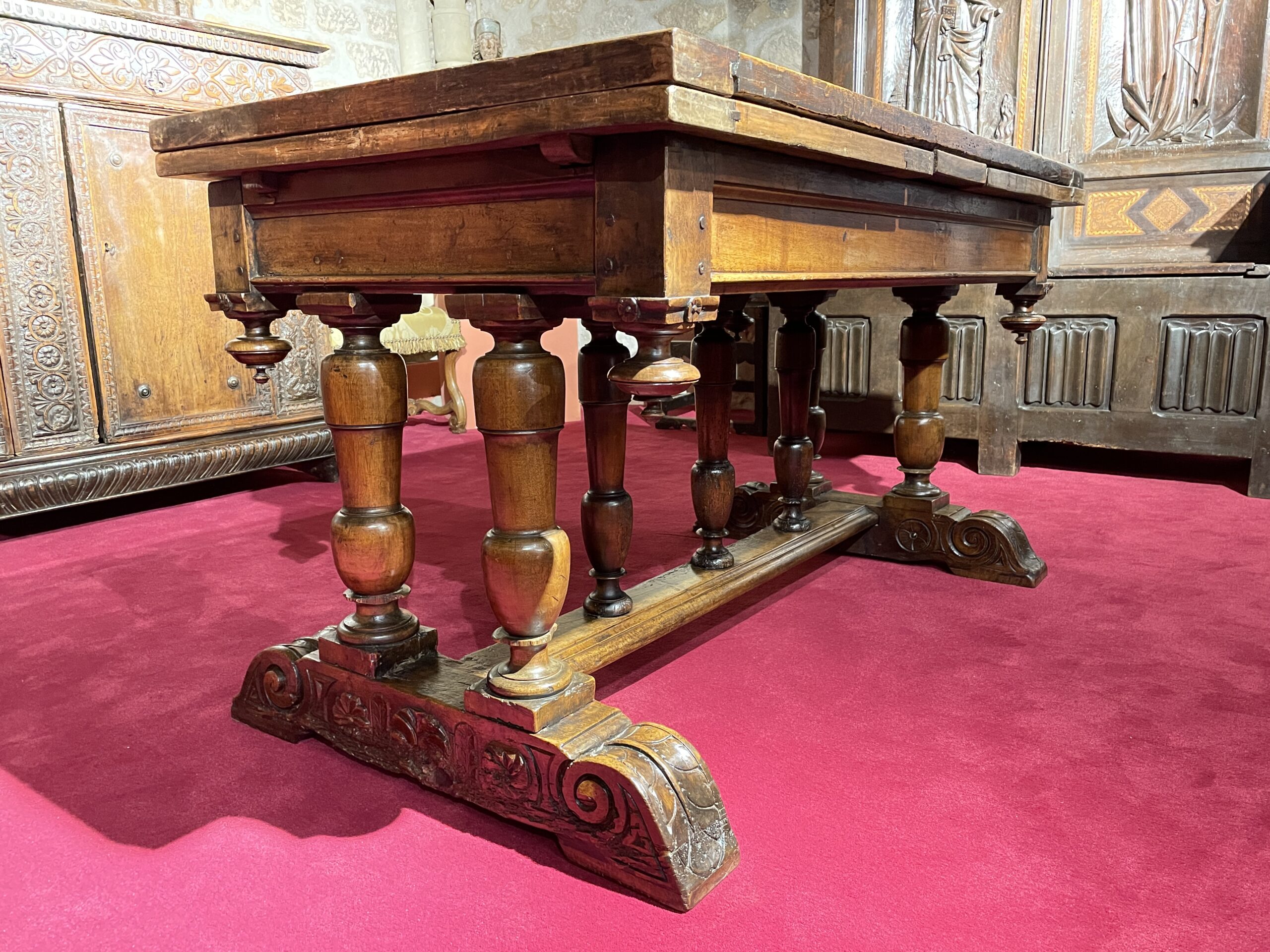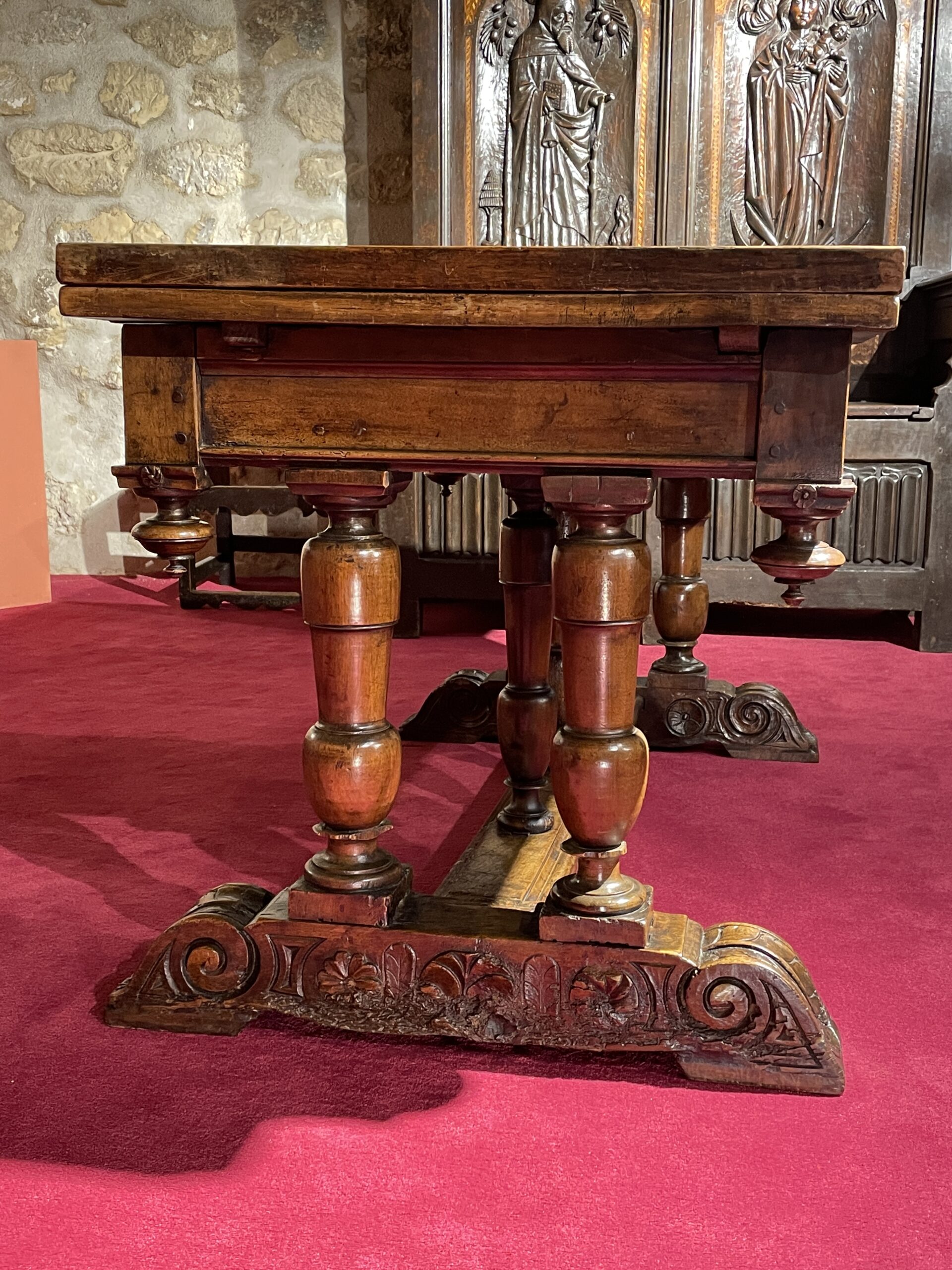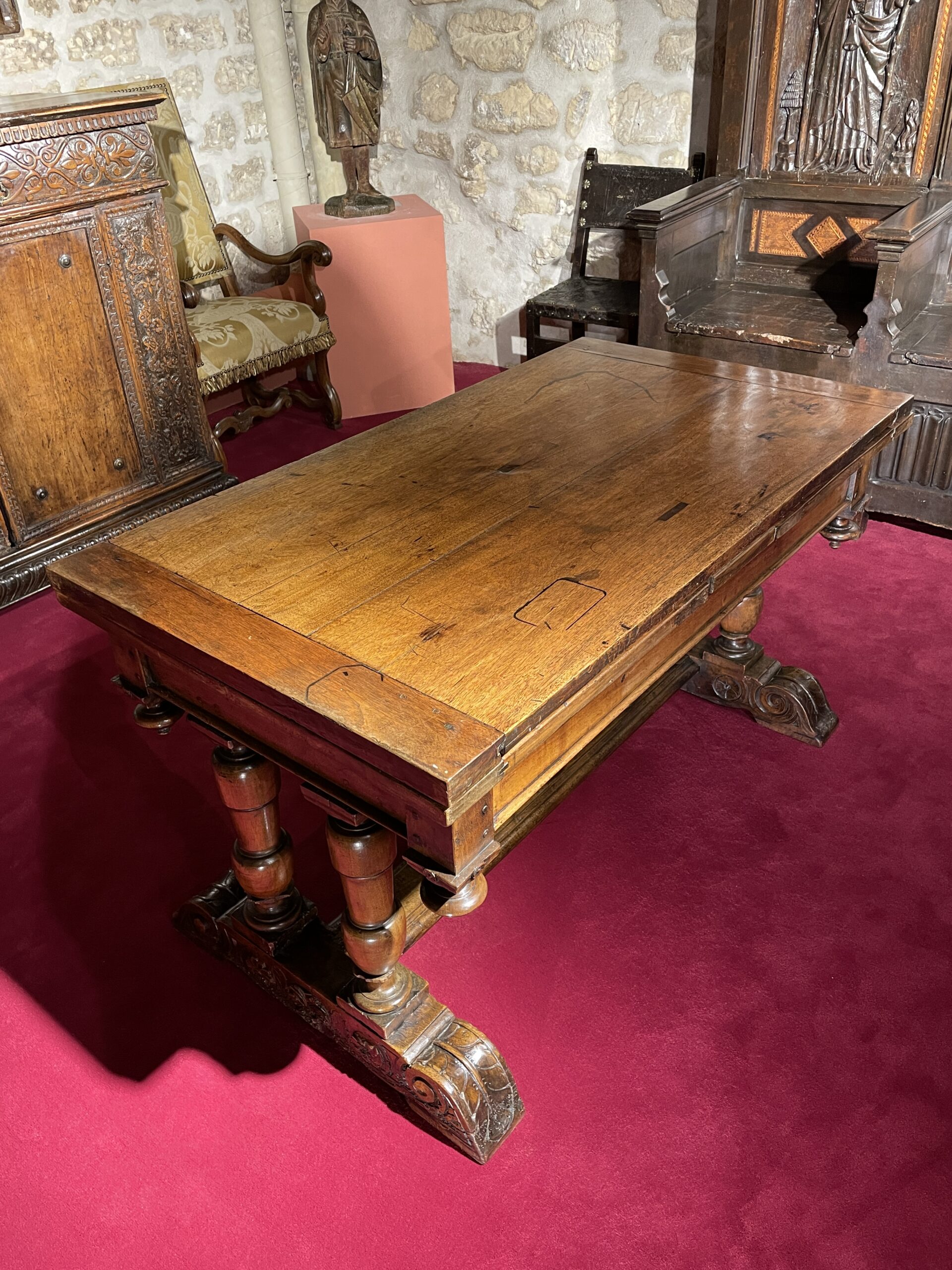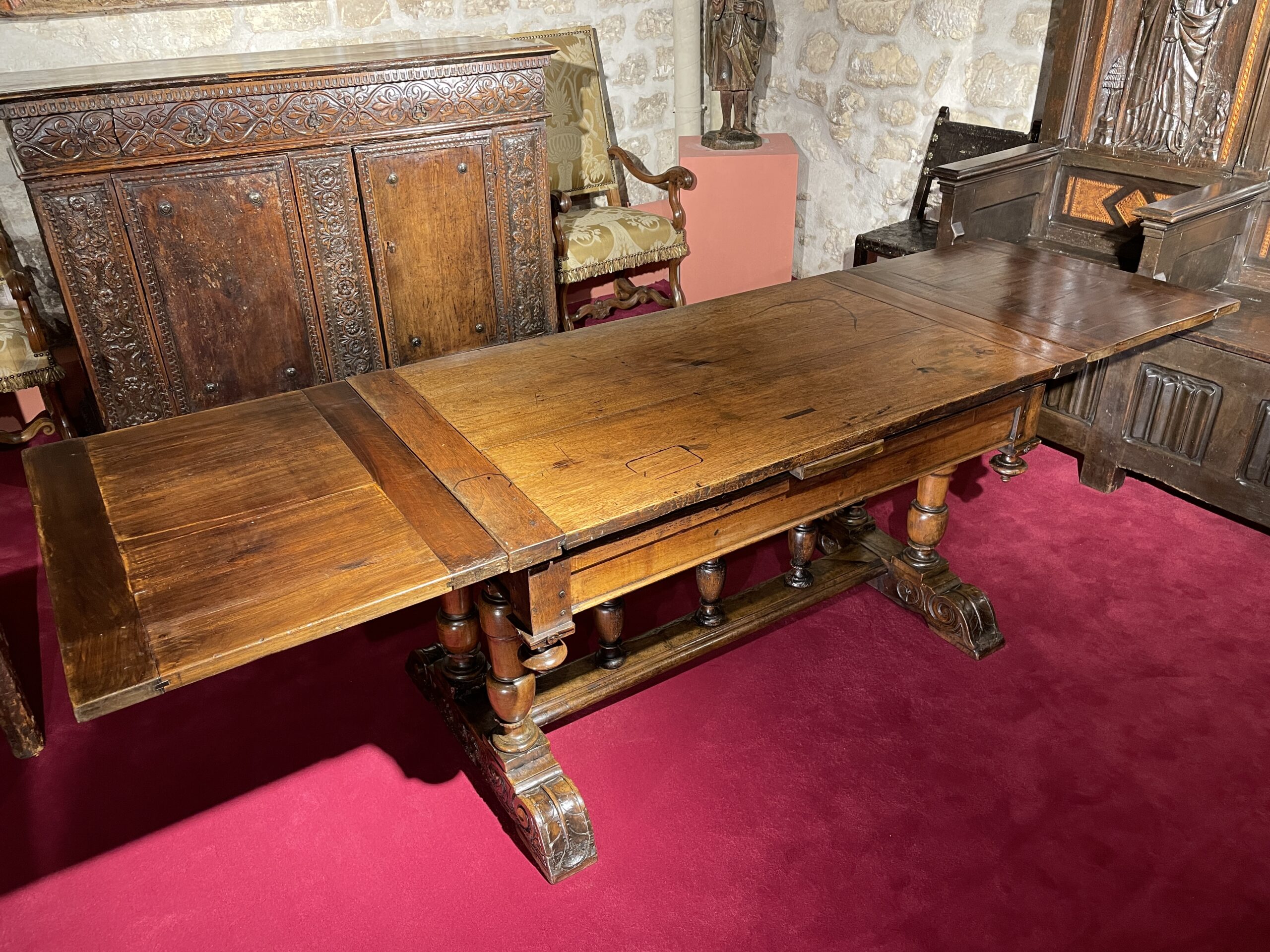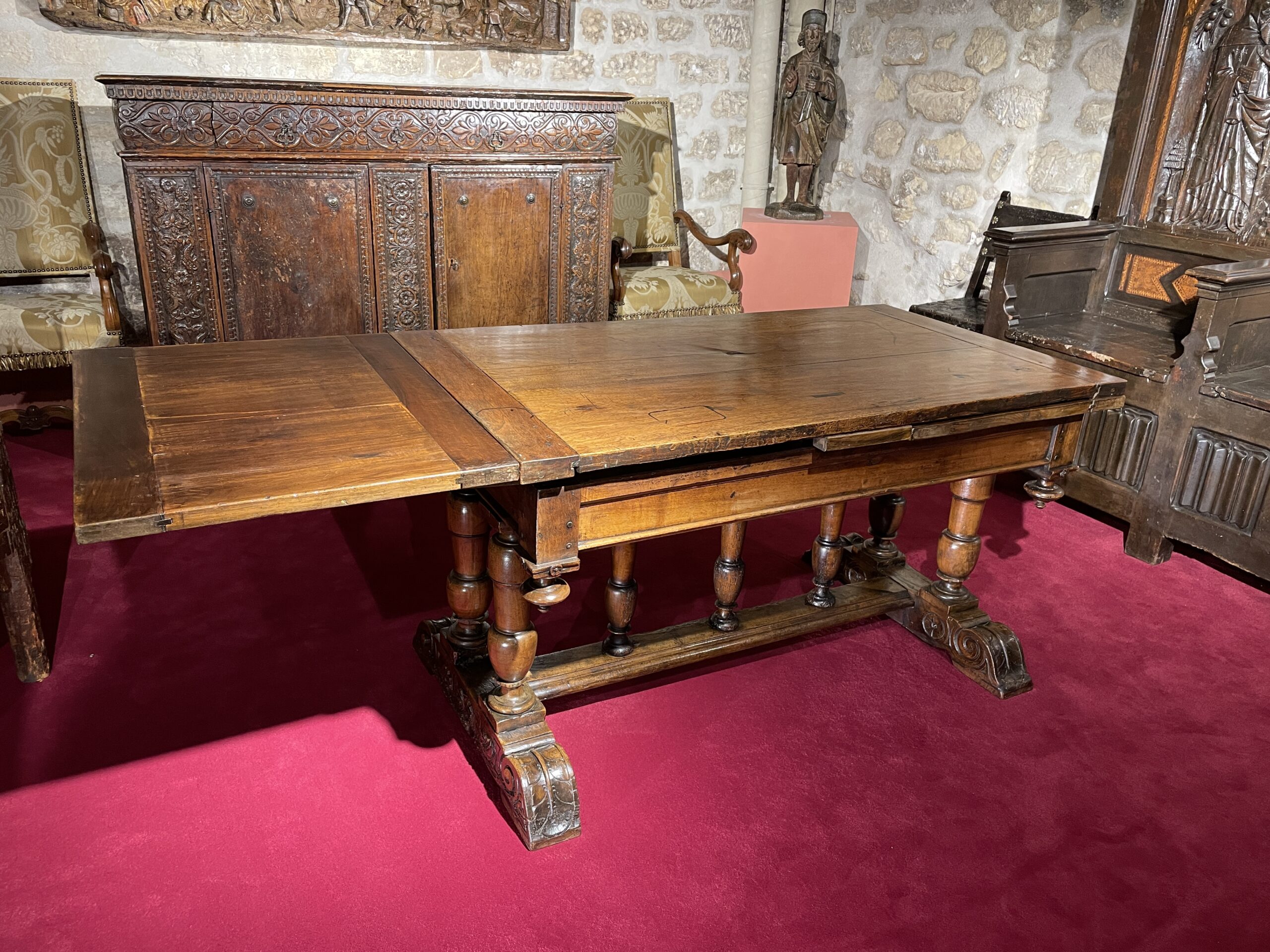Description
The table is said ‘à l’italienne’ when the tabletop stands upon two extensions. Those two leaves can be pulled out thanks to tracks inside the belt. This clever system produces a real space gain and shows beautiful carved ornaments.
The invention of this model is allegedly attributed to Jacques Androuet du Cerceau. Indeed, despite the name this table is not derived from an Italian invention. The rigour of composition, the balance of shapes and the use of classical vocabulary testify of its French making. Typical of the second half of the 16th century this tables appear in books of account and inventories around 1560.
This table shows a sobre and elegant decor, a fine example of the French Renaissance taste for a contained ornamentation opposed to the Italien trends. Autonomously from its design, the structure of the table is characteristic of the era. Two wide feet linked by a large moulded spacer, three strong turned balusters on which stands an important belt supporting the double tabletop.
These two feet, carved with palm leaves and scroll motifs act as a base for two balusters, wider than those on the spacer but showing the same design.
On each angle a flattened spinning top enriches harmoniously the table.

